“How sweet the answer Echo makes
To music at night,
When, roused by lute or horn, she wakes,
And far away, o’er lawns and lakes,
Goes answering light.”
– Thomas Moore, from Echo (1821)
From rockabilly slapback to long, spacy repeats on a searing lead, we guitarists love delay. It’s one of our most beloved effects—which makes it a subject well worth repeating. (Sorry, couldn’t resist!) Echo and reverb are the oldest of all effects, and our desire to hear them is evidenced throughout history in monasteries, cathedrals, and concert halls specifically designed to create them. The advent of electronics brought new possibilities for the creation of these effects, taking the evolution of echo into the modern age.
In terms of signal processing, delay is essentially a form of echo. A naturally occurring echo is the repetition of a sound due to reflection off of a physical surface. But this also describes reverberation. In fact, there’s quite a bit of overlap in what is commonly considered reverb, echo, and delay. So, what’s the difference? In the case of reverberation and echo, the difference is time—the length of time between the original and the repeated sounds.
Delay, however, is a unique and essentially man-made phenomenon. This is because, as applied to signal processing, delay is a single repetition of a sound, isolated and without any accompanying reflections. This is an artificial occurrence and doesn’t happen in nature. Whether a sound is made indoors or outdoors, it is never reflected back strictly from a single source. Sounds are reflected from multiple surfaces, and the reflected sounds are likewise reflected, causing multiple reflections at various intervals and volumes. Even the distinct repeat you hear shouting “Hello!” in a cave or across a massive canyon is not without ambient reflections of some sort. Although the delay is long between the source and reflected sounds, because of the multiple reflections, these events are more appropriately deemed echoes.
The irony is that, though we’re only able to achieve true delay through electronic signal processing, in a more abstract sense the original meaning of “echo” more closely resembles what we’ve just been describing as delay: In Greek mythology, the nymph Echo distracted the goddess Hera with conversation to prevent her from discovering the numerous affairs of her husband, Zeus. When Hera discovered Echo’s trickery, she cursed the nymph by taking away her power of speech—except for the ability to repeat exactly what another had just spoken.
Obviously, “echo” has since taken on much broader meaning as both a noun and a verb describing any sort of reflection or repetition of sound. Therefore echo will be included in the early part of our look at the history of delay as an outboard effect. Now, let’s look at some of the ways echo and delay effects have been created.
Echo ex Machina
The history of electronic effects runs parallel to the history of recorded music. The creation of an ambient setting could be thought of as the first effect to be used in recording. Studio engineers realized the physical characteristics of the room being performed in affected the outcome of the recording. A room with reflective surfaces, such as tile or concrete, created natural reverb. A larger room yielded an echo effect. These “live rooms” were some of the earliest and most widely used studio effects. “Echo chambers” purposely built for use in broadcast and recording date back to 1931.
An echo chamber is a very large room, usually with a playback system at one end of the room and a microphone at the other. Recording pioneer Bill Putnam Sr. is credited with being the first to employ a send-and-return method on an audio console in order to vary the amount of echo in a recording. Phil Spector’s famous “wall of sound” recordings from the 1960s are a great example of the echo-chamber effect. Echo chambers were commonly employed in commercial recording up until the 1970s, when multi-tracking, close-miking, and more sophisticated studio effects changed the way commercial recordings were made.
Many of the recording techniques still commonly used in studios today were pioneered by Les Paul back in the late 1940s. One of Paul’s more notable tricks was to add an extra playback head to his tape recorder in order to achieve a slapback echo effect. This innovation marks the point where true delay was first used as an effect, independent from echo and reverb.
As this slapback effect was employed on more and more recordings, it created demand for a way to reproduce the effect live. Ray Butts of Cairo, Illinois, was the first to step up and meet this demand when he was asked to build a device that would recreate the type of echo that Les Paul got on his records. Ray’s solution was the EchoSonic amplifier with built-in tape delay.
Ray Butts’ EchoSonic by Chet Atkins circa 1953) was delay-equipped outboard unit
to enable guitarists to achieve slapback echo in a live setting. Photo courtesy of Dave Kyle.
The EchoSonic had a fixed delay time, but it yielded a perfect slapback echo that helped define the rockabilly sound of that era. The first notable guitarist to use the EchoSonic was Chet Atkins, who recalls having the amp as early as 1953 or 1954. Next in line was Elvis Presley guitarist Scotty Moore, who commissioned an EchoSonic after hearing the one Atkins had. The revolutionary device can be heard on Chet Atkins’ recording of “Mister Sandman,” and on much of Moore’s work with Presley, starting with “Mystery Train” and on through the early RCA singles.
In 1958, Charlie Watkins helped develop what may have been the first commercially available tape delay—the Watkins Copicat. Shortly thereafter, other manufacturers began making echo-machine designs of their own. By the early ’60s, nearly a dozen manufacturers were selling portable delay units.
Debuting in 1958, the Ecco-Fonic was an attempted improvement on the earlier EchoSonic. Designed in Los Angeles by Ray Stolle, it was a tape-loop delay (like the EchoSonic), but it featured a variable delay length. Session guitarist and Ecco-Fonic endorsee Del Casher told us he suggested the method of moving the tape head (rather than slowing the tape down) to adjust the echo.
The Italian-made Binson Echorec —today one of the rarest and most sought- after delay units from the late ‘50s and early ’60s— was key to the early Pink Floyd sound.
In 1959, German manufacturer Dynacord began making the Echocord. One of the more popular European echo units in the ’60s, the Echocord Super 65 sported six ECC83 tubes, making it a terrific guitar preamp. Early Dynacord echoes were nearly identical to those from another German company, Klemt. One of the odd drawbacks of these German machines was their use of five-pin DIN sockets for the inputs and outputs—not terribly convenient for the average guitarist.
For the true echo connoisseur, nothing is more highly prized than the Italian-made units of the late ’50s and early ’60s. From Milan, Italy, came the Binson Echorec—one of the most desirable and collectible designs of all time. It used a rather unique system involving a rotating drum that had record and playback heads placed around it in a circular fashion. The drum contained a magnetic wire-recording disc that spun continuously past the heads. The legendary Binson design was integral to the sound of early Pink Floyd, as both guitarists Syd Barrett and David Gilmour made extensive use of it. It can be seen in action all throughout the movie Pink Floyd: Live at Pompeii.
Italian amplifier company Meazzi became much better known for its Echomatic delay units than for its amps. British guitarist Hank Marvin made great use of the first Echomatic for his famous “rippling echo” effect with his band the Shadows. The first version of the Echomatic used a rotating-drum system similar to Binson’s Echorec. But after having problems with the rotating drum, Meazzi switched to a tape-loop system. The better-engineered new version of the Echomatic featured six playback heads equidistant from each other, and another separate playback head for an extra-long delay.

The key component in the classic Tel-Ray “oil can” delay isn’t all that different from this Sterno can.
Over in the U.K., JMI (Jennings Musical Industries, makers of Vox instruments and amplifiers) began importing Meazzi echoes and rebranding them with the Vox name. Vox engineer Dick Denney (designer of the famed Vox AC30) decided to build his own echo machine. The result—the Vox Echo—also came to be known as “the Shadows echo” due to its endorsement by Marvin’s famous instrumental outfit, even if there is little evidence the band actually used them.
But not all early echo machines used magnetic tape. Raymond Lubow of Tel-Ray Electronics developed the Adineko Memory System in 1958. The Tel-Ray Adineko is referred to as an oil-can delay due to its unique method of generating echo by means of a small tin can (like a container of Sterno cooking fuel) containing an electrolytic oil. A motor is used to turn a small rubber belt, which in turn rotates a flywheel armed with a pickup inside the oilcan. The oil helps store the electrical charge that generates the echo. The resulting sound is not as clean and well defined as a tape delay, yielding a sometimes bizarre, warbling combination of echo, reverb, and pitch shifting.
The Echoplex EP-3, a tape- delay that used a self-contained cassette-like cartridge, is perhaps the most famous and iconic delay unit of all time.
Although Tel-Ray produced their own Ad-n-Echo Model 1001, the Adineko system was licensed to a number of other companies, including Gibson and Fender, through which most of the Adineko delays were sold.
Most of the great echo machines of the 1960s were manufactured in Europe. A couple of these designs were made available on the American market courtesy of Guild Guitars, which imported and rebranded the Watkins Copicat and Binson Echorec, selling them as the Guild Copicat and the Guild Echorec by Binson, respectively.
Fender made some forays into the echo market in the mid ’60s, too, including with the Fender Electronic Echo Chamber and the Fender Echo-Reverb. These were not as well regarded as the European machines, and there was really only one obvious choice for many American players looking for echo—the Echoplex.
Echoplex Rex, King of Vintage Delays
The Echoplex is perhaps the most popular and iconic echo effect of all time. Designed by engineer Mike Battle in 1959 (with the help of guitarist Don Dixon), the Echoplex used a loop of tape housed in a self-contained type of cassette, which was much easier to manage than other tape-based systems. It also employed an easy-to-operate movable head to achieve different lengths of delay.
Manufactured by Market Electronics in Cleveland, Ohio, the first Echoplex model was produced from the early to mid ’60s. It was succeeded by the EP-2, at which time the original—which had no model number—was subsequently designated EP-1. These early Echoplex models are prized by guitarists for their warm, tube-driven tone.
Eventually Battle was asked to design an Echoplex that didn’t require vacuum tubes, which led to the release of the EP-3 in the early ’70s. In addition to its solid-state circuitry, the EP-3 incorporated a few other changes, the most significant being its “sound on sound” feature. In sound-on-sound mode, the erase mechanism is disengaged so that the machine continues to record on top of whatever has already been recorded onto the tape loop.
This made the EP-3 the first portable looper—an analog one, to boot! Other improvements included a proper output jack (instead of the hardwired cable used on the previous models) and a better, more accessible layout. The EP-3 also featured a really nice-sounding preamp that many pedal manufacturers have attempted to emulate in recent years.
In an effort to further “improve” the design, the makers of the Echoplex came out with the EP-4 around 1976. This model incorporated additional circuitry, such as a built in noise gate, compressor, and controls for treble and bass, which affected the sound in a way most players didn’t care for. The sound-on-sound feature was also eliminated, perhaps to make room for the level meter and additional controls on the front panel. Mike Battle has stated that he was not involved with the design of the EP-4.
A couple of other Echoplex models that had a brief run in the early to mid ’70s are also worth mentioning. The Battle-designed EM-1 Groupmaster was sort of like a deluxe, 4-channel EP-3 with additional features and a large, awesome-looking analog VU meter. The budget ES-1 Sireko model lacked the sound-on-sound feature, and its delay-time slider control had a much shorter throw than the EP-3. The Sireko also used a different tape cartridge than all the other Echoplex models—one that is nearly impossible to find these days.
In the 1970s, Tel-Ray changed its name to Morley and released several large-format “oil can” effects.
Other Echoes of the ’70s
In the early to mid 1970s, electro-mechanical echo machines were still the only game in town if you wanted delay. The Echoplex EP-3, now marketed under the Maestro brand, reigned supreme but other manufacturers began releasing new and more sophisticated designs.
The oil-can delay made a minor comeback when Tel-Ray Electronics changed its name to Morley in the early 1970s and released a whole line of very large, chrome-plated stompboxes. Some of these—including the EVO-1 Echo Volume and the RWV Rotating Wah Volume, and the EDL Electrostatic Delay Line—featured the Tel-Ray oil-can design.
Universal Audio’s Cooper Time Cube warrants mention, too. Designed by Duane H. Cooper and Bill Putnam in 1971, it sent the audio signal through coiled, garden-hose-like tubing to create 30 ms of delay. Although the slight doubling effect was prized by several producers and engineers for its ability to sit well in a mix, it was more than a bit underwhelming as a delay compared to the average tape echo. Only 1,000 units were ever made.
Roland’s Space Echo RE-201 featured built-in spring reverb and a “free running” tape system that greatly increased tape life.
Japanese manufacturers made a number of unique effect contributions in the late ’60s, too. One of the first Japanese delays, the Ace Tone Echo Chamber, was released in the early ’70s as two different models—the EC-10 and EC-20. Both models had features that astute observers will recognize as precursors to the Roland Space Echo. Established in 1972 by former Ace Tone founder Ikutaro Kakehashi, the Roland Corporation entered the effects market and gave the Echoplex its greatest competition with several models of the Roland Space Echo. The first two Space Echo models, the RE-100 and RE-200, were similar to Ace Tone units in that they had multiple inputs and outputs, variable motor speed, and a multi-position rotary switch for selecting different delay settings. But these short-lived models were soon replaced by a new design that would become a classic: The next Space Echo iterations included the RE-101, RE-150, and—most famous of all—the RE-201. All three featured a new “free running” tape system that allowed a longer length of tape to be used, and that also reduced tape friction—both of which increased tape life. The RE-201 also featured built-in spring reverb. Around 1977, the company introduced the RE-301 Chorus Echo, which added the groundbreaking chorus effect from Roland’s existing JC-120 amp. This was followed by the RE-501 Chorus Echo, an improved version of the RE-301 with balanced XLR ins and outs and noise-reduction circuitry. The SRE-555 was a rackmount version of the RE-501.
Electro-mechanical delays such as the Multivox Multi Echo can sound great, but they’re bulky and difficult to maintain.
Other notable Japanese electro-mechanical delays from the ’70s include the Korg Stage Echo (models SE-300 and SE-500), and the Multivox Multi Echo (models MX-201 and MX-312). Although electro-mechanical delays are still held in high regard by many musicians, they’re not without their drawbacks. Their bulky size, high-maintenance, and unpredictable reliability keep many otherwise interested players at a distance. And by the mid ’70s, a new technology emerged to singlehandedly relegate the electro-mechanical delay to the Island of Misfit Toys.
Some believe the Dynacord EC 280 was the first BBD delay.
The Charge of the Bucket Brigade
In the early ’70s, integrated-circuit (IC) chips made it possible to create more sophisticated effects designs. The bucket-brigade device (BBD) is a highly specialized IC that facilitated development of a whole category of time-based modulation effects. Before the digital revolution, choruses, flangers, and analog delays all relied on BBDs to achieve these effects.
The BBD was invented in 1969 by F.L.J. Sangster and K. Teer at Philips Research Laboratories in Eindhoven, Netherlands. The most common version made by Philips was a 512-stage BBD named TDA 1022. Eventually, Philips licensed the technology and other companies began manufacturing bucket-brigade devices. The first was the Reticon Corporation of Sunnyvale, California, whose Sampled Analog Delay (SAD) series of delay chips became the industry standard for the first wave of modulation effects. Not long after, Philips licensed the technology to Matsushita in Japan, which developed the Panasonic MN3000 series.
BBDs are also referred to as analog delay lines, even though they’re also used in modulation effects such as choruses and flangers. This has more to do with how the chip itself functions than what type of effect it’s used in. In lay terms, here’s roughly how it works: A BBD chip contains a long series of stages. Each stage is made up of a small capacitor circuit that can store a charge. As a signal enters the BBD, it must pass through each stage of the chip, which causes a delay in the time between the signal entering and leaving the chip. The delay time is controlled by a low-frequency clock oscillator, and the total delay time is determined by the number of stages in the chip. The term “bucket brigade” was originally used to describe a single-file line of people standing side by side and passing items, usually buckets of water or sandbags, from one person to the next. This is how fires were extinguished in the days before modern transportation and plumbing.
Bucket-brigade devices were first used in musical products around 1972. Electronic keyboards such as the Eminent 310 String Synthesizer and Freeman String Symphonizer were the first to employ this new technology. It was only a matter of time before the devices found their way into standalone effect-pedal designs. The first stompbox effects to employ BBDs were flangers, which first appeared around 1974.
According to Electro-Harmonix founder Mike Matthews, the first analog delay pedal was the Electro-Harmonix Memory Man—though the veracity of this claim has been the subject of some debate. Design engineer Howard “Mick” Davis, who was hired by Matthews in 1976, recalled that the Memory Man had already been released for some time before he was hired, which at least qualifies it as one of the first BBD delays. Davis’ improved design was the now-classic Deluxe Memory Man.
Another contingent holds that the first analog delay was the EC 280 Electronic Echo, which was manufactured by Dynacord—the same company that made the highly regarded Echocord tape delay. The EC 280 used eight Philips TDA 1022 BBDs, one of the first analog delay-chip models. As analog delays go, the EC 208 isn’t great, but it does have a quirky lo-fi sound that’s unique and rather endearing.
Yet another contender for first analog delay is the Marshall Time Modulator, an exceptionally great-sounding studio rack unit with some highly innovative features. Stevie Wonder used it on his 1976 album, Songs in the Key of Life. The Tycobrahe Analog Delay Line was another early design that used four Panasonic MN3001 BBDs and had an awful lot of circuitry for a relatively short delay time. Due to its rarity, the Tycobrahe is more of a collector’s item than a useful delay unit.
MXR’s bucket-brigade Analog Delay (left) debuted in 1977 and became one of the most popular delay pedals of its time. Boss’ bucket-brigade DM-1 Delay Machine (right) preceded the now-legendary DM-2 compact analog delay.
One of the more popular analog delay pedals of this era, the MXR Analog Delay, debuted (along with the company’s new “block logo” design) in 1977. And though Boss is better known for its DM-2 analog delay pedal from the early ’80s, the pedal giant’s first analog delay was the DM-1 Delay Machine, which came out in 1978. By the end of the decade, every major effects manufacturer offered BBD flanger, chorus, and analog-delay effects.
Unfortunately, the demand for BBDs was somewhat limited, and the advent of digital technology soon rendered analog delay chips obsolete. Reticon ceased producing them in the early ’80s, thus the majority of subsequent analog delays featured Panasonic chips until Matsushita ceased production of Panasonic BBDs in 1999.
By the 1980s, many manufacturers emphasized rackmountable effects, such as the A/DA STD-1 (top)
and Ibanez’s AD-230 (bottom), a multi-effect monster with 18 BBD chips.
The Digital Revolution
By the end of the ’70s, two major effects-market shifts began unfolding. First, manufacturers started to focus more on rackmount products and less on stompboxes. This was coupled with a growing movement in favor of newly emerging digital technology. As a result, the next wave of classic delay units was mostly rack devices.
Initially, some of these products used analog BBD circuitry. A/DA entered the market in 1978 with a line of stompboxes, beginning with the legendary A/DA Flanger, but by ’81 it had switched exclusively to rackmount products. One of its early rack units, the STD-1 Stereo Tapped Delay, was a high-quality, BBD analog delay. And though Boss (a division of the Roland Corporation) and Ibanez continued producing effect pedals during the ’80s, each also had its share of rackmounts. The mother of all vintage Ibanez rack effects was the Ibanez AD-230 Analog Delay and Multi-Flanger, a studio-quality unit that used 18 Panasonic MN3004 BBDs.
But within a couple of years, even the analog rack delay would become a relic of the past. With their relatively low fidelity and inherent loss of high-end frequencies, bucket-brigade delays were no match for the crystal-clear repeats of a digitally sampled signal. Digital technology was the way of the future.
Eventide Clock Works Inc.—today known simply as Eventide—was one of the first companies on the digital signal-processing scene. Its legendary H910 Harmonizer, which debuted in 1975, featured pitch shifting and a short digital delay, with feedback control for creating doubling effects. In 1979, Mu-Tron’s Digital Delay arrived, although it was short lived due to the fact that the company had just been purchased by ARP, which went under the following year.
The early to mid ’80s brought some of the most highly regarded digital delays ever produced. Lexicon, which was already breaking new ground with the 224 Digital Reverberator, introduced the PCM 41 Digital Delay Processor in 1980. It was the first in a series of world-class digital delays that would also include the PCM 42 and PCM 70.
The Digital Delay (top) was one of Mu-Tron’s final products before folding in 1980.
Meanwhile, Korg’s SDD-3000 (bottom) gave the Edge his echoes.
In 1982, Korg debuted the SDD-3000 Programmable Digital Delay, which quickly became integral to the signature sound of U2’s the Edge. Around the same time, Roland released the SDE-3000 Digital Delay, a rack that was on par with the Korg but that now commands less than half the price on the vintage market ostensibly due to the lack of celebrity association.
In 1984, players who wanted digital delay in a stompbox finally had access in Electro-Harmonix’s 16-Second Digital Delay—a pedal that King Crimson guitarist Adrian Belew made extensive use of, especially for its looping capabilities.
Eventide scored big in 1985 with the H3000 Ultra Harmonizer, a state-of-the-art processor with algorithms for creating pitch shifting, delay, and modulation effects that had never been heard before. The H3000 quickly became a must have for broadcast and recording professionals.
TC Electronics TC2290 Dynamic Digital Delay + Effects Control Processor, released in 1986, is one of my all time favorite delays of any kind — fantastic sound quality, great modulation, packed with features, easy to program, and the best looking display a rack unit could have.
Rackmount gear was fully established by the late ’80s and dominated the scene in the early ’90s—this was the heyday of digital multi-effects units. However, most multi-effects units of the era seemed to concentrate on quantity—numbers of effect types and preset-storage slots—rather than quality. The focus of manufacturers trying to develop products that delivered the most bang for the buck resulted in the cheap, over-processed guitar tones that began to give digital a bad rap.
The Seattle grunge movement of the ’90s helped shift players’ attention back to analog stompboxes, creating an interest in “vintage” pedals and helping to foster a new cottage industry of first-generation boutique pedal makers. But while more pedals were becoming available, delay was an underrepresented effect in the ’90s stompbox scene. Programmable rack delays still had it over stompboxes in terms of options and flexibility. One of the better delay-pedal options toward the end of the decade would have been something like the Boss DD-5 Digital Delay. Over the next decade, things became a whole lot different.
Today and the Future
At present, the effects market is completely and utterly saturated. If there’s such a thing as too many choices, we’re definitely there. In terms of delay, great units are available from many different companies, no matter what your preference—analog, digital, stompbox, rack, app, or plug-in!
Units such as Strymon’s Timeline and Eventide’s TimeFactor and Space pedals represent the pinnacle of state-of-the-art stompbox delay: Each unit offers more features, depth, and programmability than most players could use in a lifetime. And for those who don’t want that deep of a dive, there are units like the Empress Vintage Modified Superdelay, a feature-packed digital unit that’s a little easier to get your head around.
But analog delay is anything but dead. Semiconductor companies such as CoolAudio and Shanghai Belling are now manufacturing bucket-brigade-device reissues that have made possible a new generation of analog delays, including the über-boutique Toneczar Echoczar and Analog Man ARDX20, not to mention MXR’s Carbon Copy, Way Huge’s Aqua-Puss, and many, many others. And if that’s not enough, Moog Music just released the Moogerfooger MF-104MSD Super Analog Delay, which uses six new-old-stock Panasonic BBDs.
Want more? The options are nearly endless: If you’ve got a hankering for authentic tape delay but don’t want to take your chances on a beat-up old unit, you can get yourself a Fulltone Tube Tape Echo. And there are plenty of powerful digital boxes, apps, and plug-ins that aim to give you a taste of virtually every delay technology discussed here.
With a whole universe of delay at our fingertips, it’s hard to imagine how delay will evolve in the future. We can certainly expect to see more of what we already have in a variety of forms from various brands, in endless cycles of repetition. Any further innovations will most likely take place in the digital realm. Portable looping units are becoming ever more sophisticated and compact, and new variations of “shimmer” delay effects will likely be available. Perhaps some predictive modeling algorithm will enable us to generate delay from a signal that has yet to be created—a virtual time traveling echo machine to bring us delays of future past.



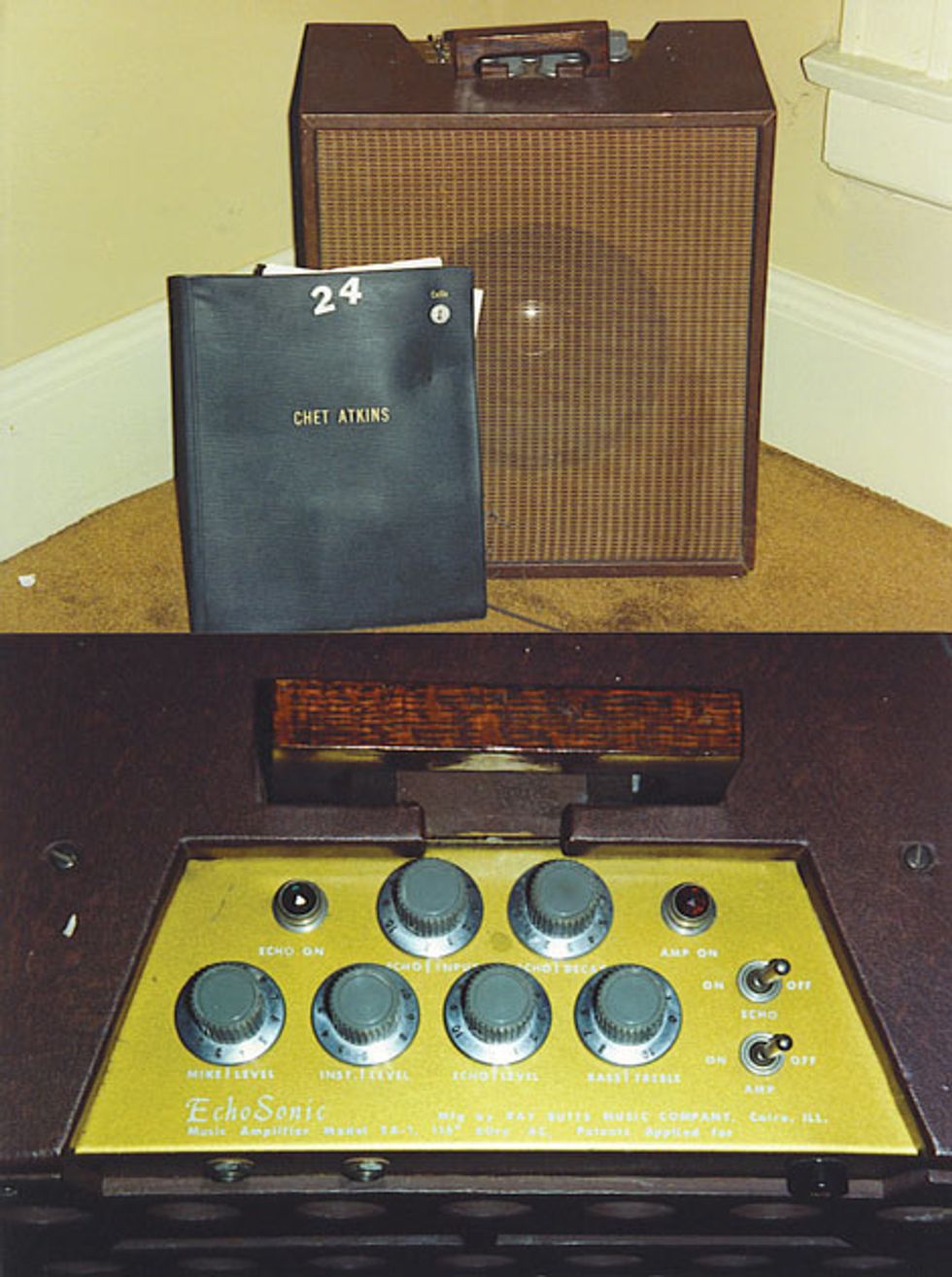
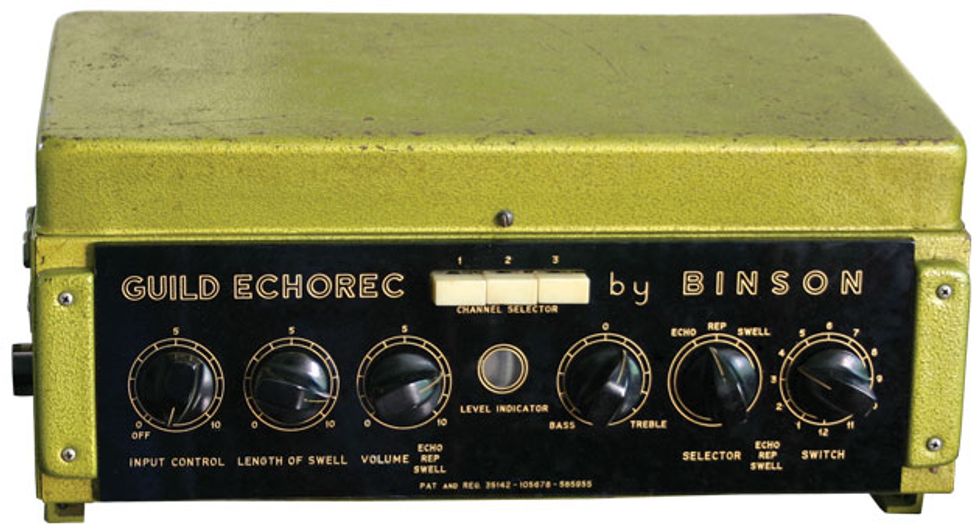
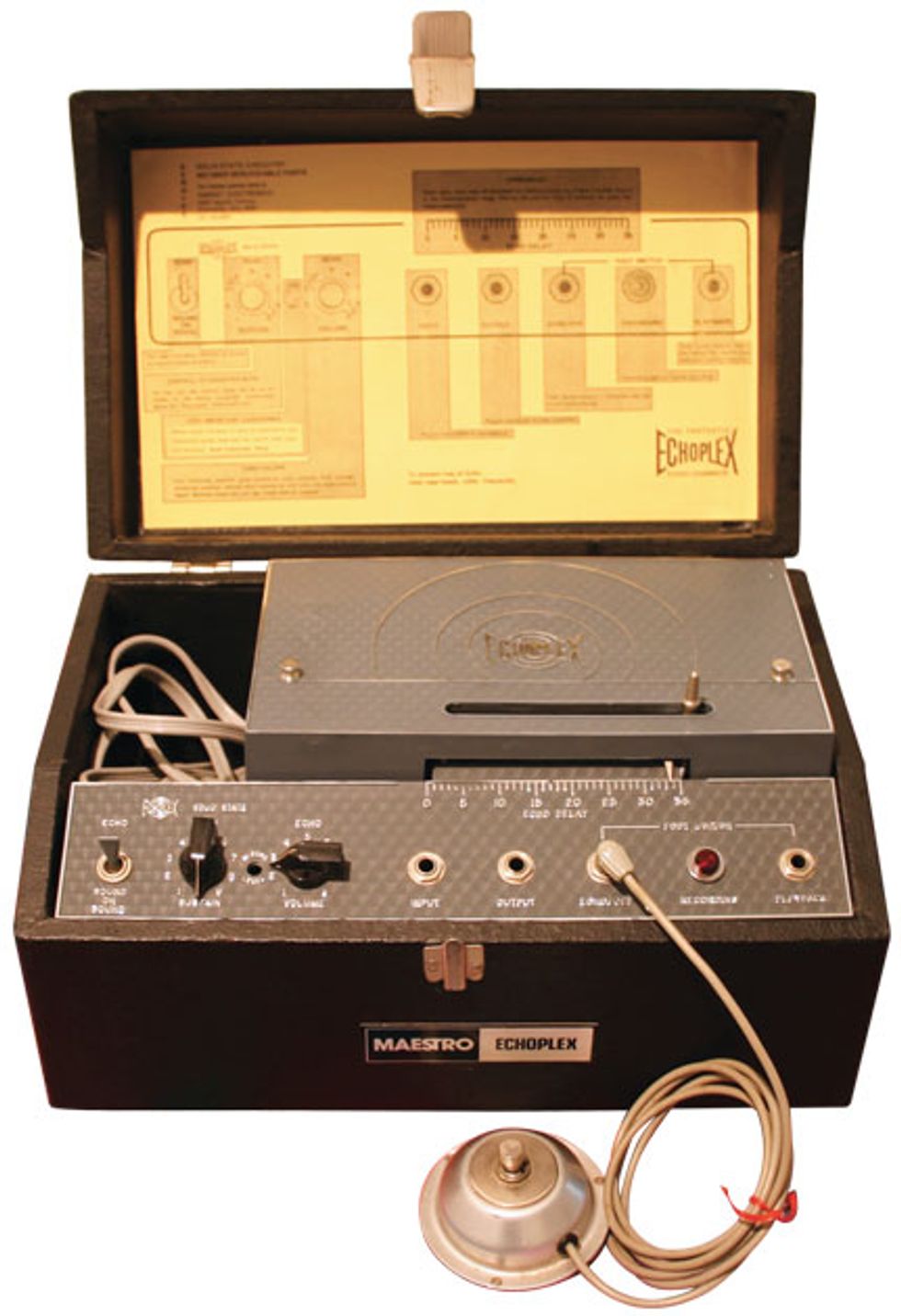
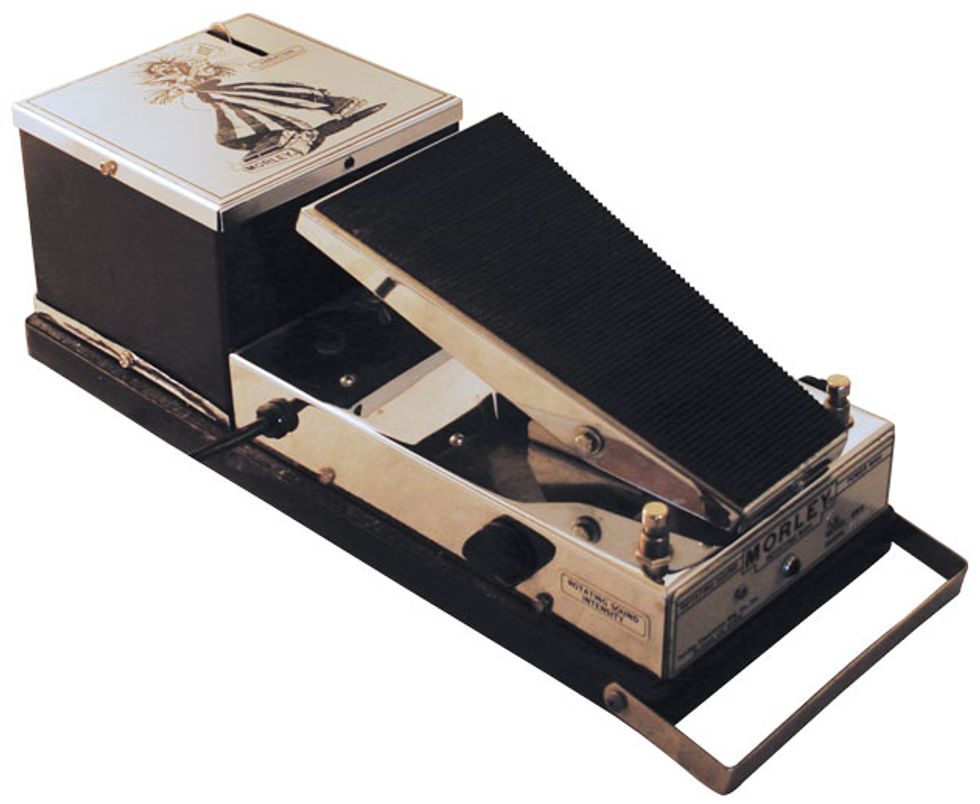
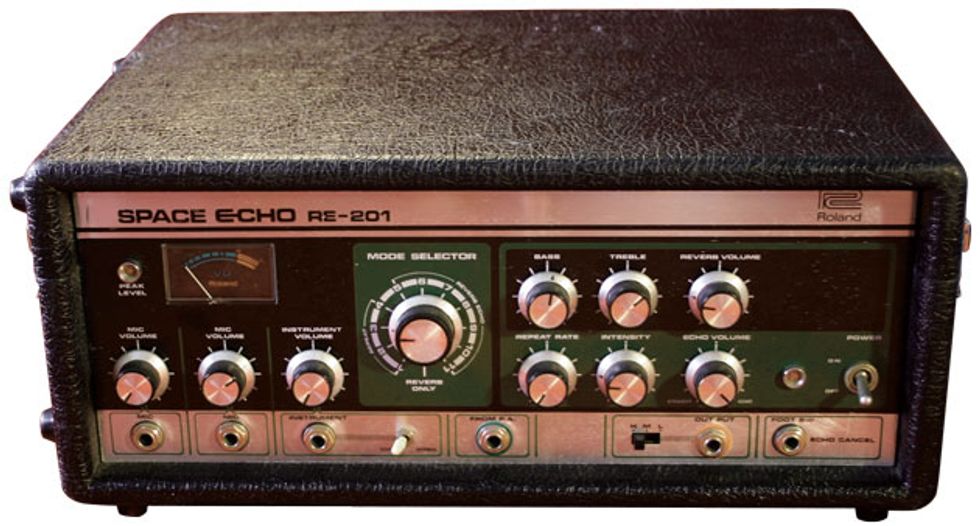
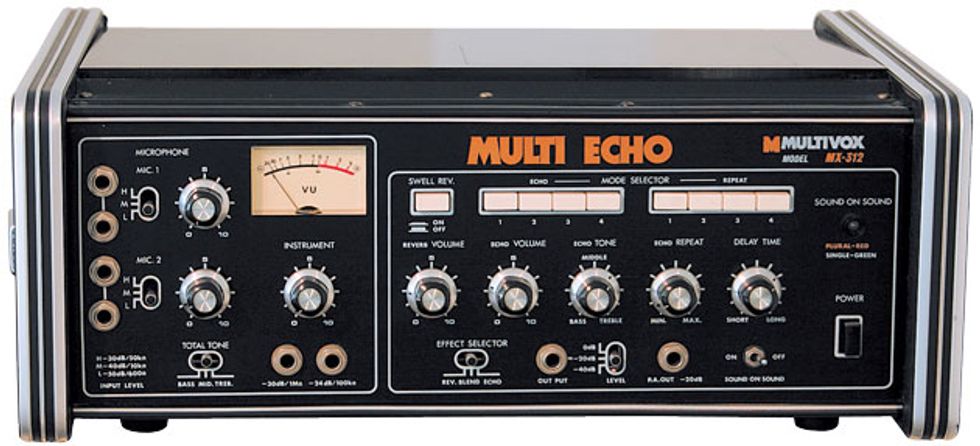
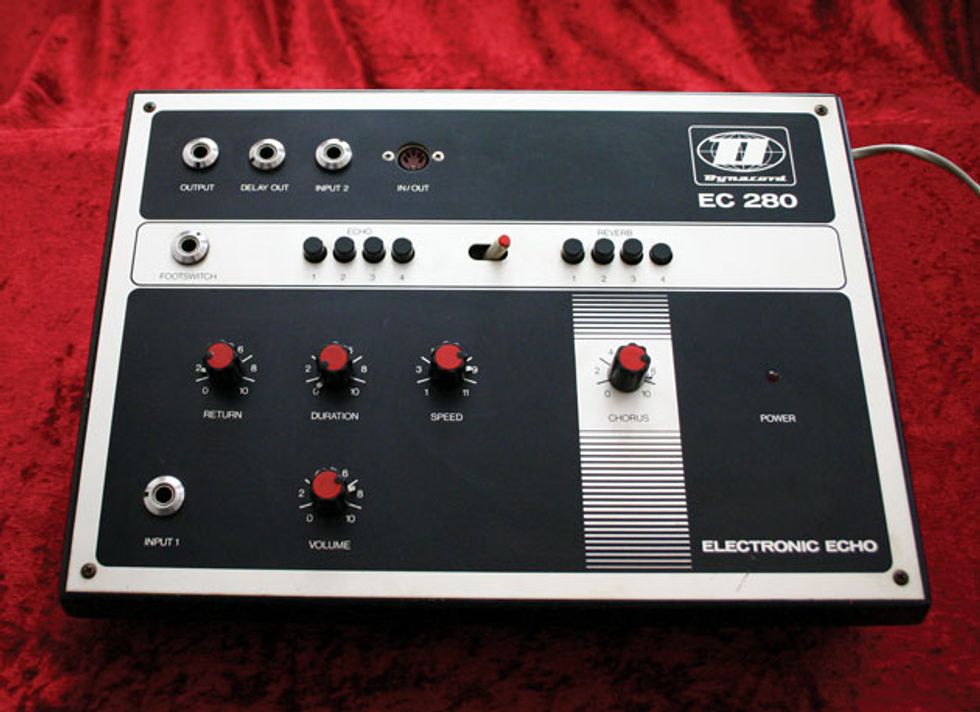
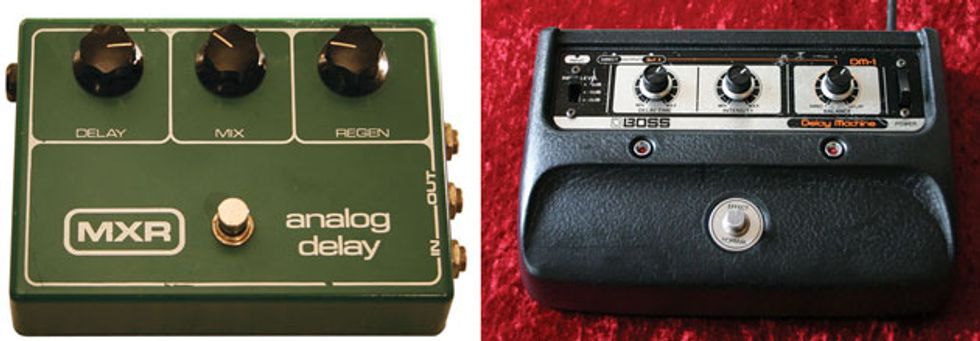




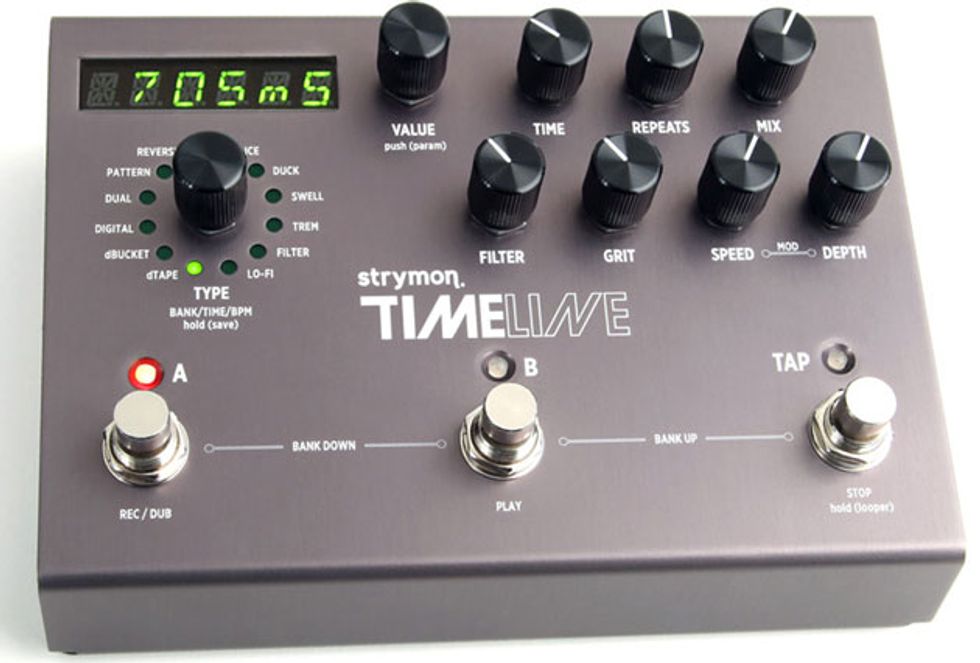




![Rig Rundown: Russian Circles’ Mike Sullivan [2025]](https://www.premierguitar.com/media-library/youtube.jpg?id=62303631&width=1245&height=700&quality=70&coordinates=0%2C0%2C0%2C0)


























